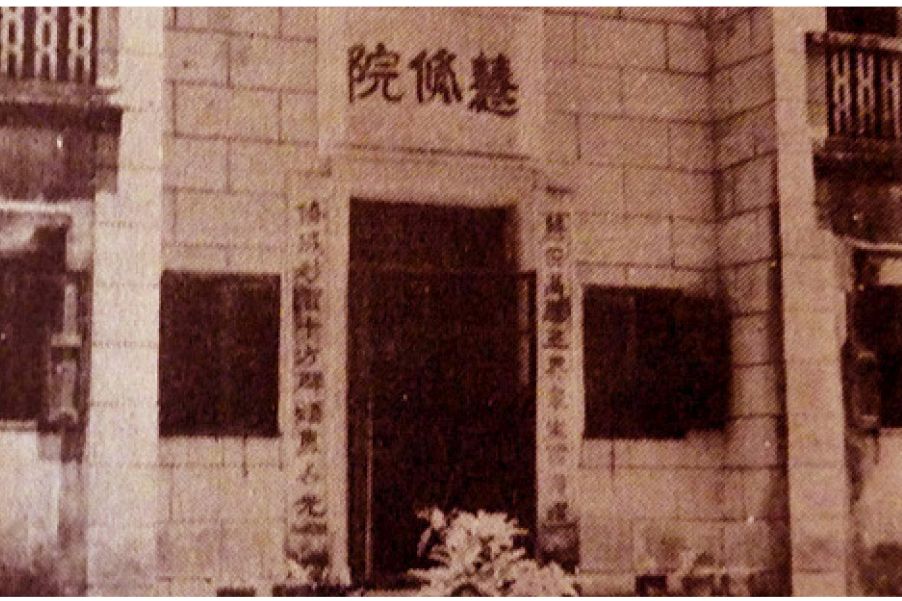Brief History
The bright light of Buddha's wisdom (Hae) shines on the three realms.
Clear wisdom attained through practice (Su) illuminates the ten directions.
This couplet on the front door of Hae Su Temple expresses the meaning behind its name.
Hae Su Temple was established in 1934 by Venerable Sing Sau, then still a laywoman and a disciple of Venerable Mau Fung, the founder of Tung Po Tor Monastery in Tsuen Wan. Legend has it that one day in 1935, a big rock weighing hundreds of kilos came tumbling down from the hilltop towards Hae Su Temple, but the rock stopped just one foot before the temple’s back wall and Hae Su Temple remained intact. The “miracle” fascinated many witnesses. However, over time, the rock could not be found anymore — it was told that the rock was broken up and used as building material later on.
Lantau is a large island west of Hong Kong island. Transport was very difficult in the early days, with only one fishing boat or ferry from Hong Kong island each day. However, a number of great monastics practiced in the secluded, serene mountains of Lantau. Some monastics and laypersons, who wished to learn Buddhist sutra teaching from the senior teachers, also came to live in these temples or hermitages. Venerable Liu Ming, Venerable Chen Ming, Venerable Liu Lin and Venerable Wai Ying, who followed Venerable Tze Hong to study the sutras, stayed at Hae Su Temple.
During World War II, life was challenging in the mountains, and the monastics dispersed, with only the seriously ill Venerable Liu Ming remaining at Hae Su Temple. After the war, Hong Kong was still in turmoil, and trading had yet to resume. Venerable Chen Ming established a temporary school at Hae Su Temple to provide basic education for school-aged children in the neighbourhood.
In the 1940-50’s, the monastics lived a simple life, growing their own food while keeping the mantra practice in their everyday life. In those days, Hae Su Temple hosted many/ chanting ceremonies, including the seven-day Surangama Retreat, and the monastics were invited to expound on the Surangama Sutra and Lotus Sutra, as well as the “Chapter on the Bodhisattva Precepts Arising from the Mind Ground” of the Brahmajala Sutra. The well-respected Venerable Mau Fung had also held dharma talks at Hae Su Temple, where he wrote the following couplet:
The wisdom (Hae) of our true nature shines through eternity.
The practice (Su) of the noble way illuminates ten thousand years.
As time went by, Venerable Mau Fung’s disciple, Venerable Liu Lin, succeeded Venerable Sing Sau as the abbot of Hae Su Temple. Due to the lack of resources and the arduous life in the mountains, after the passing of Venerable Liu Lin, only her disciple Venerable Tat Chi continued to stay and care for Hae Su Temple. In the following years, fewer and fewer people came to practice and the temple became deserted.
In the 1960s, Venerable Liu Ying, the House Master of Gat Cheung Yuan (a division of Tung Po Tor Monastery), vowed to revive the desolated Hae Su Temple. Together with Venerable Liu Hung and other monastics, they started hosting ceremonies with the laypeople from Gat Cheung Yuan, including the Emperor Liang Repentance Ceremony held before the Birthday of Kwan Seum Bosal and the annual Water Repentance of the Compassionate Samadhi. The ceremonies usually lasted seven days in the early years, and later on, only one to three days due to the shortage of hands. After the passing of Venerable Liu Ying, Venerable Liu Hung continued to host the ceremonies in Hae Su Temple with the descendants of the early laypeople of the temple until the last one in June 2007.
In June 2008, Hong Kong was hit by a "once-in-a-century" rain storm, which caused widespread landslides on Lantau Island, including the slope behind Hae Su Temple. At that time, there had been no resident monastics at Hae Su Temple for years to manage the temple. The directors of the temple were old laypeople who had their own families. The last four directors, including Ms. Ho Kuen Wah, the granddaughter of the founder Venerable Sing Sau, and three disciples of Venerable Liu Ying (Ms. Kwan Goh Sen, Ms. Kwan Woo Hung and Ms. Chan Po), decided to hand over Hae Su Temple to Zen Master Dae Kwan, abbess of Su Bong Zen Monastery. They believed that Zen Master Dae Kwan will carry on the vow of their founding teacher Venerable Mau Fung and his disciples, and that she will revitalise the temple as a pure and serene place in the mountains where people can practice together.



